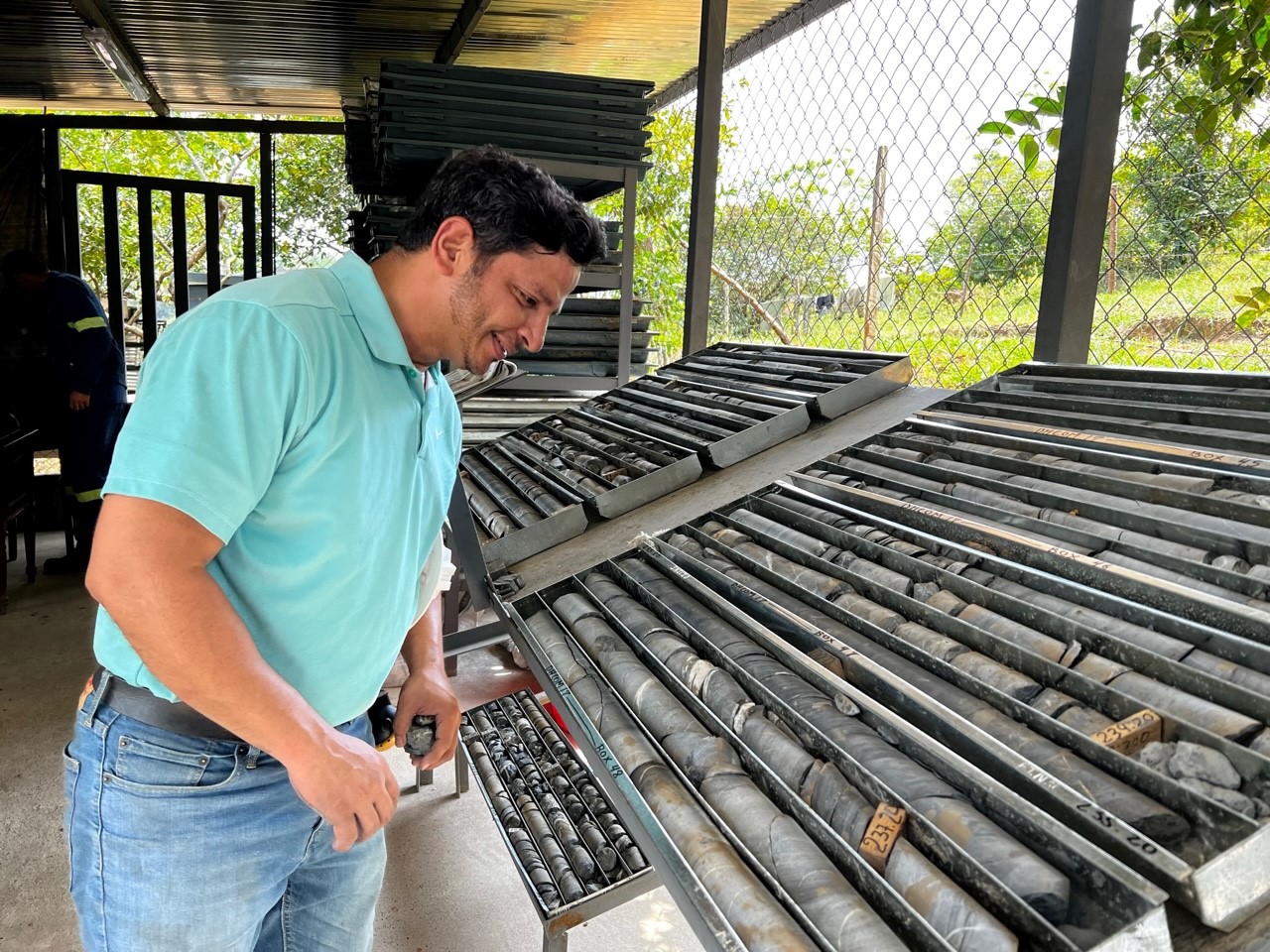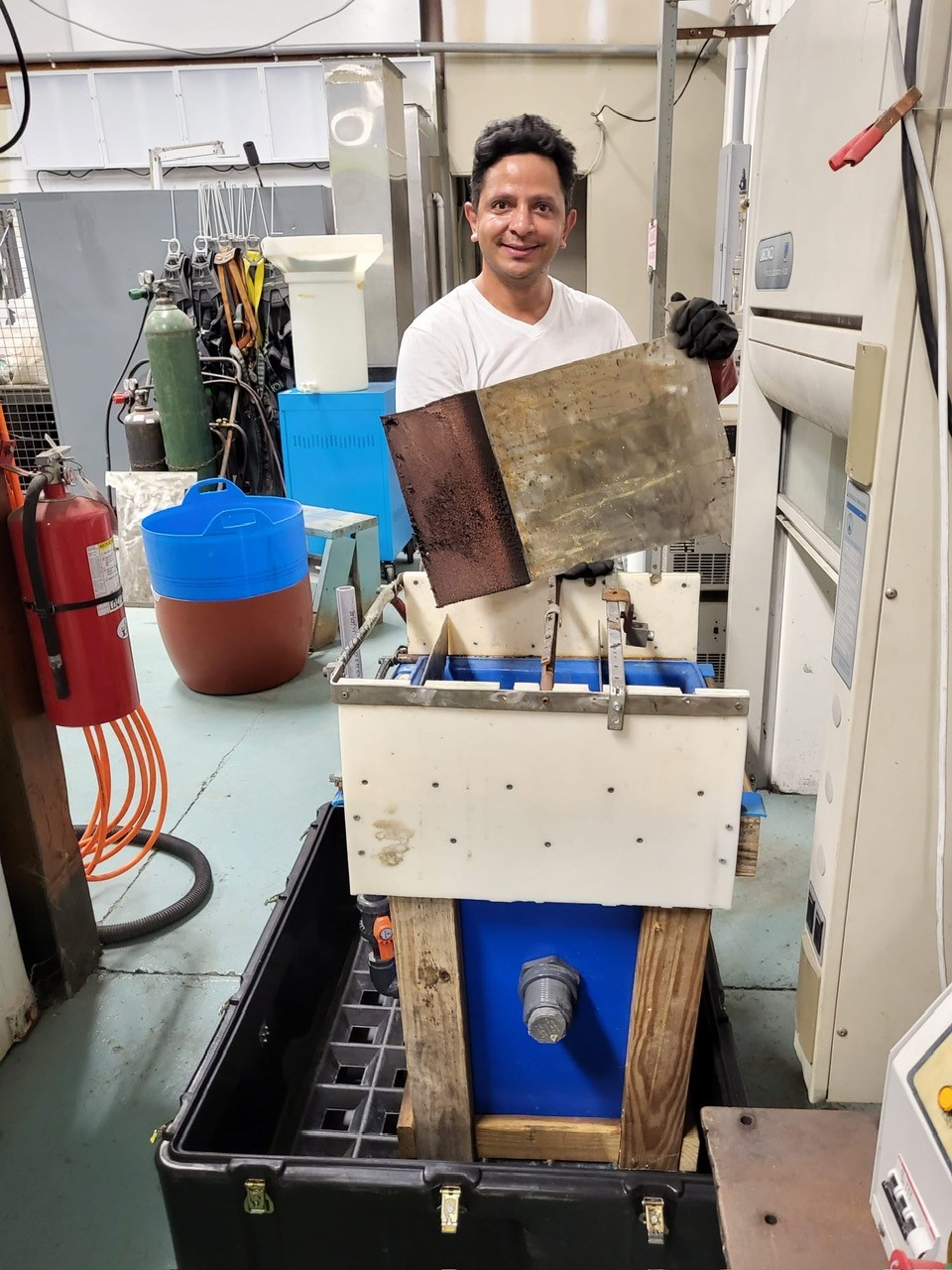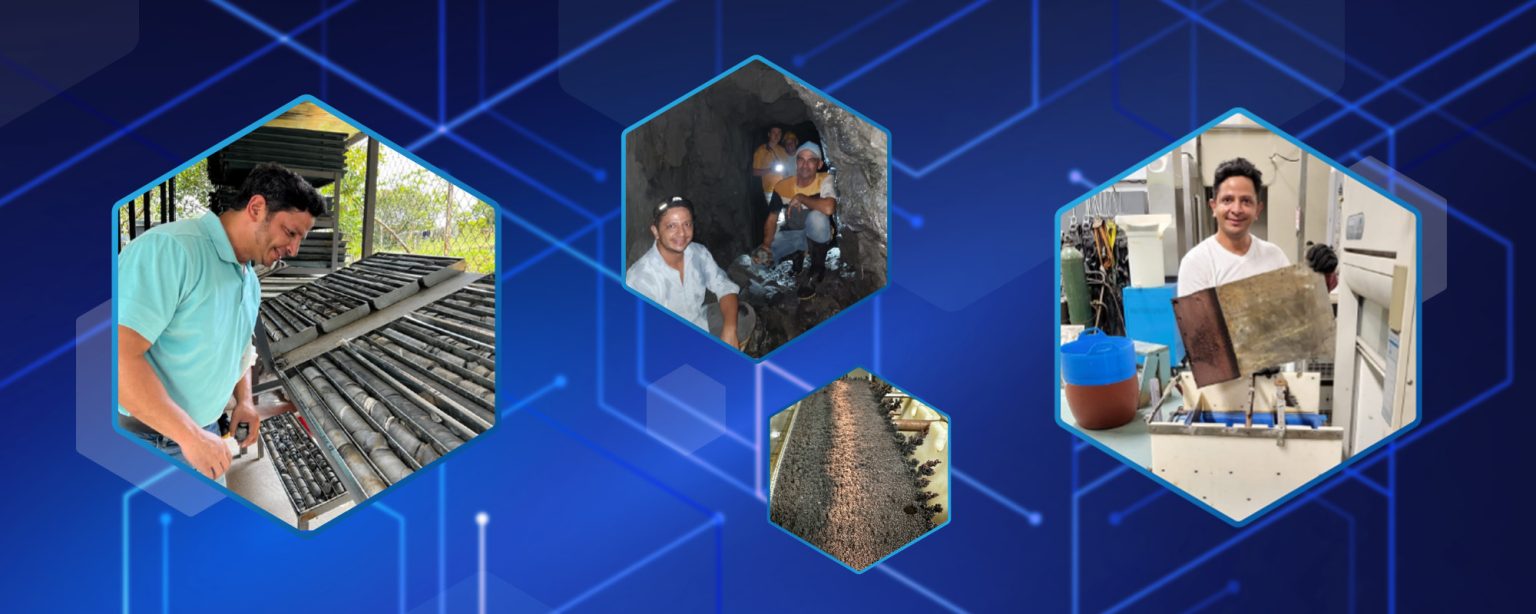For Juan Carlos Villatoro, what began as a simple internet search for information that could help him extract high-value minerals from used cellphones and laptops might now seem like a big twist of fate. The clean energy entrepreneur from Jacksonville, Florida, most likely didn’t expect a connection to Idaho National Laboratory that would eventually result in his business, Alquimista, receiving help through the lab’s Technical Assistance Program (TAP).
TAP offers up to 40 hours of free lab-based expertise to small businesses whose work dovetails with the lab’s mission. It’s available only when comparable expertise cannot be found in the private sector. Under TAP agreements, INL has helped a wide range of companies, from one that needed battery testing for its portable solar power units to another with a device capable of restoring broken underground power lines six times faster than standard methods.

Villatoro said the information he received from INL through TAP will be invaluable as he amasses materials from domestic and foreign sources for processing at the company’s pilot plant in Florida. But his story starts in 2019, and it has a few twists and turns.
Searching for answers
That year, Villatoro wanted to recover rare earth elements from electronic waste. Searching on the web for answers, he found INL and David Reed, a senior staff scientist, who had information on a bioleaching process. “We spent considerable time working with him,” Reed said. But when Villatoro’s focus shifted to recovering metals from lithium-ion batteries, “We felt that our bioleaching process was not sufficiently developed at that time to help him and referred him to Tedd Lister and Luis Aldana.”
INL researchers Lister and Aldana were co-inventors of EC-Leach, an electrochemical carbon-free process for recovering materials from end-of-life lithium-ion batteries. With encouragement from the U.S. Department of Energy’s Critical Materials Institute, Villatoro and Aldana landed a slot in DOE’s Energy I-Corps program, a business “boot camp” that helps researchers find partners for their inventions or services.

“It was fascinating,” said Villatoro, who served as industry mentor to Aldana, the principal investigator, and Mark Strauss, the entrepreneurial lead. “Through Energy I-Corps, we were able to connect with companies like Apple and GE.”
After Energy I-Corps, Villatoro wondered whether EC-Leach might be used to extract platinum group metals from tailings he was buying from mining operations in South America, mainly Colombia. These metals – platinum, palladium, rhodium, osmium, iridium and ruthenium – are critical to advanced manufacturing. This is when TAP came in.
One step further with TAP
For support, Alquimista approached the DOE Office of Technology Transitions about its COVID-19 Technical Assistance Program, CTAP 2.0. While CTAP focused on public health impacts of the COVID-19 pandemic, CTAP 2.0 funding was for technology-based projects aimed at spurring economic recovery, with a focus on critical American infrastructure and supply chains. A U.S. Navy veteran, Villatoro hopes to support national security goals by creating a stable supply chain for platinum group metals, relieving the country’s reliance on foreign sources.
EC-Leach, a 2022 R&D 100 Award winner, uses electrons as a green reagent for extracting critical and strategic materials from spent batteries. The process can achieve extraction efficiencies of more than 98% in a hydrogen-peroxide-free environment, which is critical. Not needing hydrogen peroxide for an extraction process reduces its carbon footprint and environmental impact, Aldana said.
Under the CTAP program, Alquimista provided Aldana with 605.5 grams of graphite and 915.6 grams of mine tailings, which were homogenized and sieved into three different fractions. Once Aldana and his team prepared the samples, they subjected them to two methods of reaction: traditional chemical leaching and electrochemical leaching. In the first, the researchers added the tailings to a hydrochloric acid solution in presence of hydrogen peroxide, heated them and then left them alone for six hours. The electrochemical leaching process operated at room temperature with 60% less acid than the traditional chemical leaching and without any hydrogen peroxide. After six hours of reaction, the results were virtually identical to the chemical leaching process.

As a Navy veteran, Villatoro has a strong sense that he is helping national security with his effort to create a stable supply chain for platinum group metals in the United States. He said the information he received from INL through TAP will be invaluable as he amasses materials from domestic and foreign sources for processing at his pilot plant in Florida.
“The tech is as effective as chemical leaching, if not more,” Villatoro said. “We’re seeing positive results and moving ahead.”







